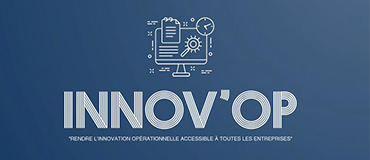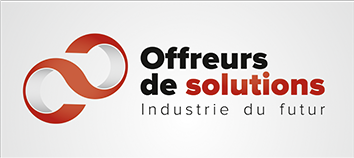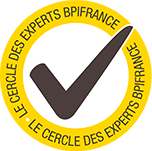The advantages are numerous: savings,
improved efficiency, cost optimization, and even enhanced CSR impact.
For the industry
Automotive, aeronautics, construction, industrial and robotic equipment, energy, transport ….
Regardless of your industry and your company size, augmented reality solutions can be deployed to improve your productivity in a concrete way.
The investments required to deploy and integrate these solutions are now readily available to all industrial companies, and particularly profitable to SMEs.
Why augmented reality in the industry?
Augmented reality (AR) is the superimposition of digital content over the real world; equipped with AR glasses, technicians will be able to perform/follow tasks or instructions intuitively and easily with their hands-free; without special expertise, they themselves become experts.
Use cases
Remote assistance
The costs involved in after-sales service, maintenance requirements, or even the shutdown of a plant have major economic impacts for companies; the time to solve problems becomes a crucial issue.
In this context, remote assistance allows expert technicians to share their skills with a field technician to effectively assist them in conducting complex tasks.
By using a simple video stream, document sharing, and/or Augmented Reality, technicians can be quickly guided in their interventions.
In the manufacturing industry, the cost of downtime is approximately $260,000 per hour.
Pingdom study, January 2023
Objectives
• Decrease travel costs
• Address the lack of available skills
• Propose new service offerings

Training
Training and skills transfer remain a major challenge, which can be inefficient and costly.
Augmented Reality training tools are intuitive, effective, and adapted to all levels. Knowledge acquisition, sharing know-how or step-by-step instructions, the use of solutions with connected glasses make it possible to learn and execute tasks autonomously.
To address the skills gap, 71% of employers globally are upskilling & reskilling their current workforce.
Manpower group WW study, 2023
Objectives
• Train intuitively and effectively
• Adapt content, make it evolve in a straightforward way
• Attract youth profiles

Work instructions/self-managed maintenance.
Operator guides on workstations, production line support, inspections, procedures, and work instructions are all elements that can be optimized with augmented reality technologies.
Now thanks to digitalized information readable on a mobile phone, a tablet or through connected glasses, the tasks to be conducted are simplified, in real time and measurable.
Augmented reality solutions allow the users to view their tasks and step-by-step instructions, while being granted access to company/factory/warehouse information.
The shortage of skilled personnel can hinder efficient MRO operations, potentially leading to longer downtime, higher costs, and suboptimal maintenance practices, impacting overall productivity and competitiveness (…).
Data Bridge Research Market, 2023, MRO trends 2023-2030
Objectives
• Provide intuitive and effective tools
• Facilitate recruitment
• Track results and improve procedures

Quality audit
On site or remotely, tools for continuous process improvement can be deployed thanks to augmented reality.
This allows process deviations to be monitored and non-compliance to be detected using a digital approach to manage procedures, work instructions and inspections.
These tools enable data traceability, compliance tracking and detailed analytics across users’ digital workflows.
Users can also benefit from the immediate assistance of an expert if needed
Many manufacturers think of noncompliance costs in simple financial terms, but they are difficult to quantify and include lost market access and opportunities, inefficiencies, and reputational damage.
Manufacturing Dive, January 2023
Objectives
• Continuous improvement of processes
• Increase customer satisfaction
• Get the data traceability

How can Reapse Consulting help you?
• Explain the value of each solution, and assess the potential ROI for your business
• Develop specifications, engage business stakeholders, highlight challenges, avoid pitfalls
• Find and test suitable equipment (glasses, tablets, phones)
• Select the best software solution according to the constraints of the specifications and the chosen materials
• Support procurement and deployment, but also internal change management, handling of the new equipment





